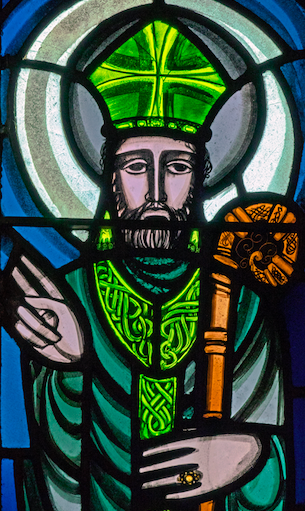AUTHOR Alannah Hopkin is well-versed in Irish history,
Based in southwest Ireland, she has written extensively about the country and its past for Fodor’s, Berlitz and Insight guides.
This month an updated version of her seminal 1989 book, Patrick – From Patron Saint to Modern Influencer, has been released.
It covers the historical saint and the ways in which the image of St Patrick has been used in forming modern Irish identity.
Here she reveals eleven things you should know about Ireland’s patron saint...
 St Patrick (Pics: Joezef Vrtiel)
St Patrick (Pics: Joezef Vrtiel)1 He really existed, and he died on 17 March, 461 AD.
2 Patrick first visited Ireland when he was kidnapped by pirates to as a young man to work as a slave. Nobody knows where he came from, but he grew up in Britain under the Romans. Places he might have come from include Brittany, the west coast of Scotland, Wales or England. The only thing we know for sure is that he was not ‘Irish born and bred’.
3 We do not know what part of Ireland St Patrick called home, but it was most likely County Down on the east coast, or County Mayo in the west.
4 St Patrick did not convert Ireland single-handed, as people used to believe. He was one of several missionaries travelling around the country in the fifth century AD, converting the pagan Irish to Christianity.
5 Dublin’s St Patrick’s Day Festival with the parade as its main event, is relatively new, reinvented in the early 1980s to entertain the large numbers of American visitors who flocked to the city on March 17 with their marching bands and set dancers. The Dublin parade quickly became a key feature of the Irish Tourist Board’s promotion of Ireland overseas.
6 The tradition of taking an alcoholic drink on St Patrick’s Day is a very old one, recognised since time immemorial by the issue of generous rations of “grog” (strong liquor) to Irish regiments.
7 About 23,000 people climb Croagh Patrick in Co. Mayo on the last Sunday in July, some of them barefoot like their forefathers. The traditional belief is that Patrick fasted on the mountain for forty days and forty nights in 441 AD before casting the devils along with the snakes and reptiles out of Ireland.
8 The official emblem of Ireland in heraldry is the harp surmounted by a crown on a blue background. Green only came to be associated with St Patrick and Irishness in the eighteenth century.
9 There is no such plant as ‘the shamrock’. Botanists agree that the three-leaved plant called shamrock is usually the winter resting stage of red or white clover.
10 Pictures of Saint Patrick as an elderly bishop in long green robes with a mitre on his head and a staff in his hand are inventions of the 17th-century Catholic church, to emphasise its links with Rome. In real life St Patrick would have worn a short tunic and leather sandals and with a short cloak over his shoulder.
11 About 11,000 people a year still spend three days on Station Island, barefoot and fasting, and saying 2520 mainly silent prayers in a pilgrimage associated with Saint Patrick that has remained largely unchanged since the 1600s.
 Alannah Hopkin (Pic: Nelius Buckley)
Alannah Hopkin (Pic: Nelius Buckley)Alannah Hopkin also writes fiction. Her most recent book is A Very Strange Man: A Memoir of Aidan Higgins

